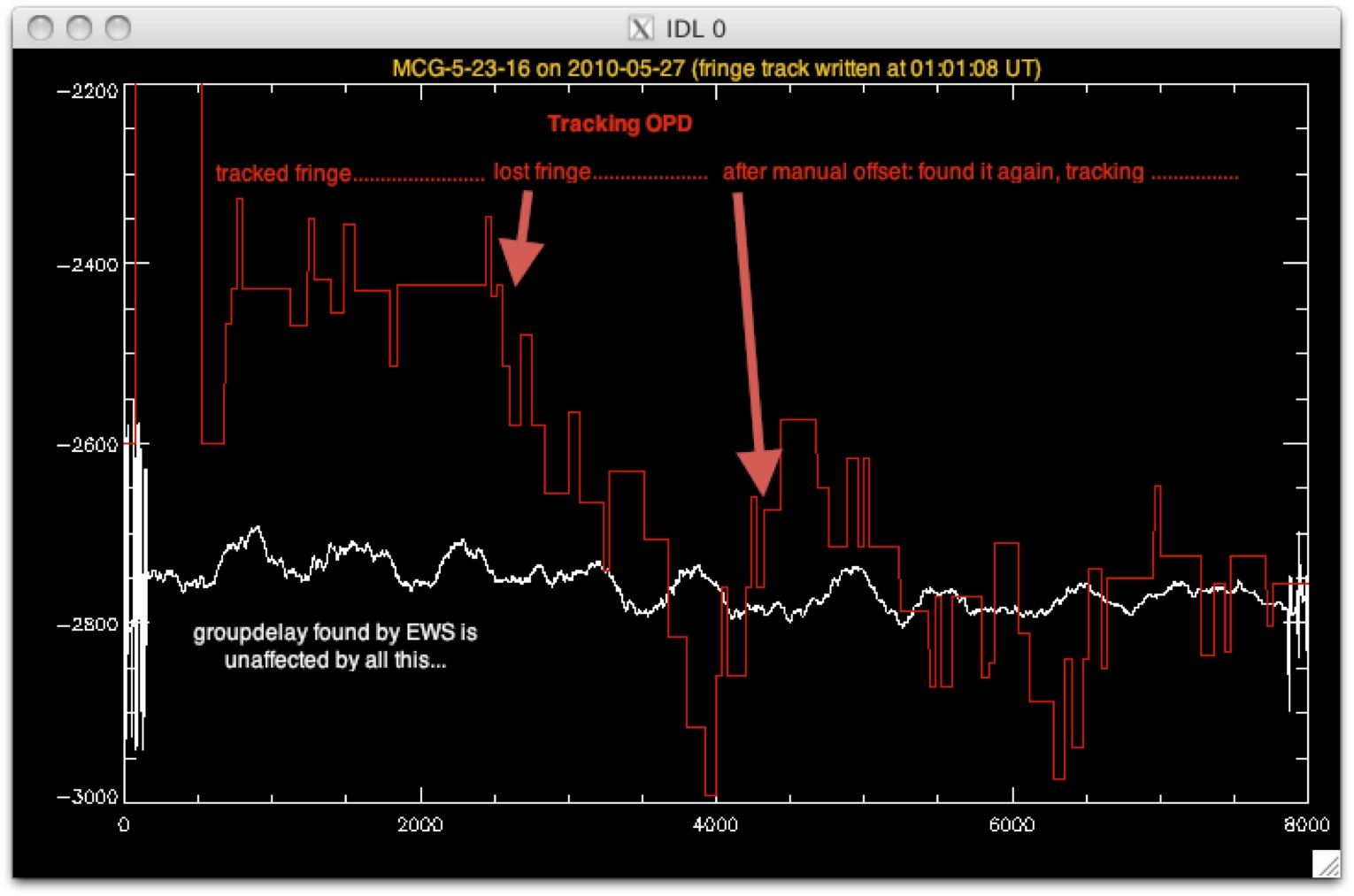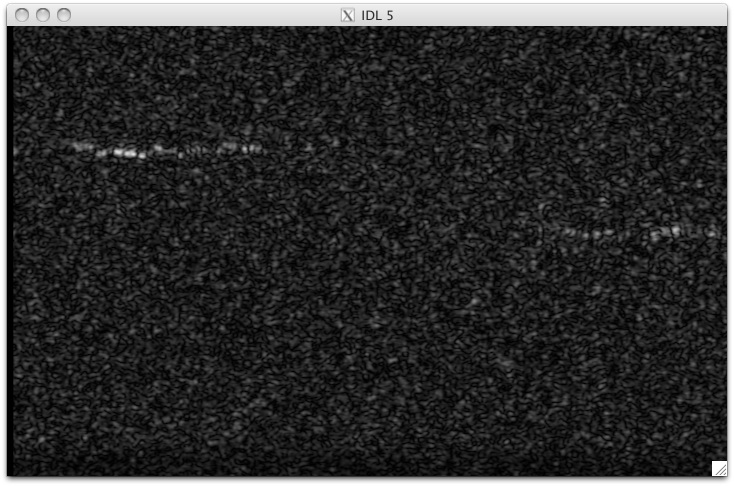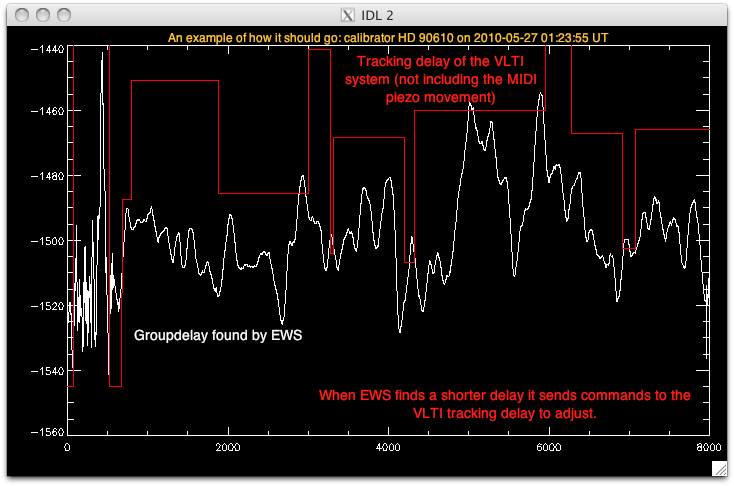
|
High angular resolution @ MPIA |
DR /
Fringetracking-examplesManual Delay Line offsets (not stored in the data) and example of bad tracking This displays the tracking OPD in micron (more precisely: the tracking OPD commanded by MIDI to the ISS (1)) versus Frame number for a weak AGN. The tracking OPD is displayed in red, the group delay found by EWS's oirGroupDelay is displayed in white. If it only sees noise, it cannot find the groupdelay and becomes very noisy (first few hundred frames). In this case, the source was tracked already at frames 500-2000, but at a wrong position, as can be seen in a plot of frame-by-frame Fourier-transform versus frame (see below). After that, the fringe "ran away", i.e. the online tracking system believed it wasn't tracking the fringe anymore and went into fringe search mode, thereby continously increasing/decreasing the OPD. This can be seen in frames 2000 - 4000 in the above plot. At about frame 4000, the observers, who knew that the fringe had been found at roughly -2.6 mm before, manually offset the delay lines by a couple hundred microns several times to bring the tracking OPD back to the zero fringe position (the -2.6 mm). These manual offsets have not been recorded in the data, but, from this plot, it seems as if this change is now recorded in the tracking OPD (the red curve). After frame # 5000, MIDI seems to have tracked the fringe (see also plot below). What is strange in the above plot is that in the first ca. 2000 frames the online system was obviously tracking on something (also seen in the lower plot) but it didn't try to force the delay lines to the found groupdelay. This can be seen in the lower plot in the fact that the more or less horizontal line is not in the center (= zero OPD) at the beginning. The reason for this is unknown. Nevertheless: In the data reduction, these first frames could be problematic because at ca. 150 micron from the true zero OPD position, the signal is already attenuated due to the bandpass given by the atmospheric N band (which transforms into a finite OPD length in Fourier space). So EWS reacted correctly in flagging these frames due to excessive OPD difference (difference between tracking group delay and found group delay too large).  This shows the Fourier tranforms of each individual frame (from wavelength to delay space) on the y-axis versus frame number on the x-axis (smoothed in frame-direction). The brightness shows the amplitude of this quantity. It is this kind of plot from which oirGroupDelay estimates the groupdelay. (1) This 'tracking OPD' does not include the MIDI-internal OPD ('localopd'). The 'localopd' is the one that varies from 0 to 80 micron (in 20 steps; all default values) in order to scan the fringe. But it need not be centered on 0 or on some off-fringe position (if offset tracking is selected) but can also have some other offset. When the online tracking system detects that the fringe moves it first tries to correct this using the MIDI internal OPD and only when this is not sufficient it sends commands to the delay lines sytem. All delay lines (both the 'local' one inside MIDI and the big delay lines) consist of two delay lines (for each beam) but only one of them is moving and the local one moves always for the beam which is not moved in the big delay line. Therefore, the total instrumental OPD is given by If everything works And this is how it looks like if everything works as it should |